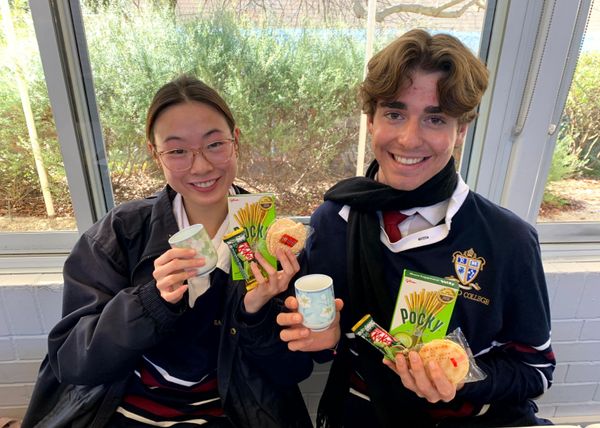Year 12 Japanese Ikebana Workshop
By Michele Sharp, Head of Languages
As part of the BSSS and IBDP themes of Diverse Perspectives and Human Ingenuity, Year 12 Japanese students are investigating how culture and language are expressed and appreciated in diverse mediums such as the arts and sciences.
We recently delved into Japanese tea drinking culture and enjoyed a cup of "お茶 ocha" (green tea) on a cold Canberra morning. No tea drinking experience is complete without a sweet treat, so we had to have some green-tea flavoured snacks as well. The students were surprised to discover that these snacks have become readily available in Canberra supermarkets, and that the health benefits of drinking green tea range from preventing cavities to cancer.
On Friday, we participated in a practical workshop delivered in Japanese by Sachie Terasaki from Ikebana Canberra. This was a natural extension of our learning of the Japanese aesthetics of 'wabi sabi', which values impermanence and simplicity, and "mono no aware", known as the pathos of things, or simply, the emotions that objects evoke.
Ikebana, the art of flower arranging, has a long history in Japan and has connections with the Shinto and Buddhist religions. Whilst some may think of Ikebana as a feminine pursuit, it has been practiced as a form of meditation by Buddhist priests and was created by Samurai before going into battle. They viewed the arrangements as an opportunity to purify their minds and as a symbol of their own mortality.
We learnt how to create a traditional basic Ikebana arrangement and a freestyle vase arrangement, and soon found out it was not as easy as it looked.
Culture is something very much embedded in a language; therefore, we strive to allow our students the opportunity to experience the rich cultural elements of the language they are studying alongside that all important vocabulary and grammar.
